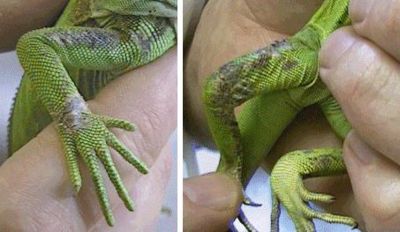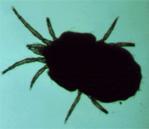| This article is still under construction. |
Mite Infestation
Ectoparasites are a common problem in captive lizards. Mite infestation may result in a black dermatitis, "black skin disease", but ticks are rare. As the mites are usually quite ubiquitours, snake mites can infest lizards and vice versa. Hirstiella trombidiiformis is the common lizard mite.
Clinical signs and Diagnosis
The ectoparasites can usually be found in the axillae and stifle skinfolds of lizards. The tissue damage created by the mite causes swelling, irritation, erythema and even secondary bacterial infection; the skin appears as raised areas of colour change on the skin, generally on the ventral abdomen and limbs. In more serious cases, mite infestation can lead to dysecdysis and transmission of bacterial and viral agents (e.g. Aeromonas hydrophila septicaemia, haemoparasites and inclusion body disease).
Individual mites are visible on magnification. They can be seen moving on the host, sometimes in small numbers. They can also be found drowned in the affected animal's water dishes.
Treatment
The animal and its environment need to be treated as a big part of the parasite's life cycle is spent off the host.
- Initially, a bath in warm water will rid the animal of some of the mites.
- Oral or subcutaneous ivermectin 0.2mg/kg PO or SC, repeat in 2 weeks; the environment should also be sprayed with ivermectin diluted in water.
- Topical insecticides (e.g. Frontline)
Prevention
- Preventive medicine including quarantine and appropriate husbandry.

